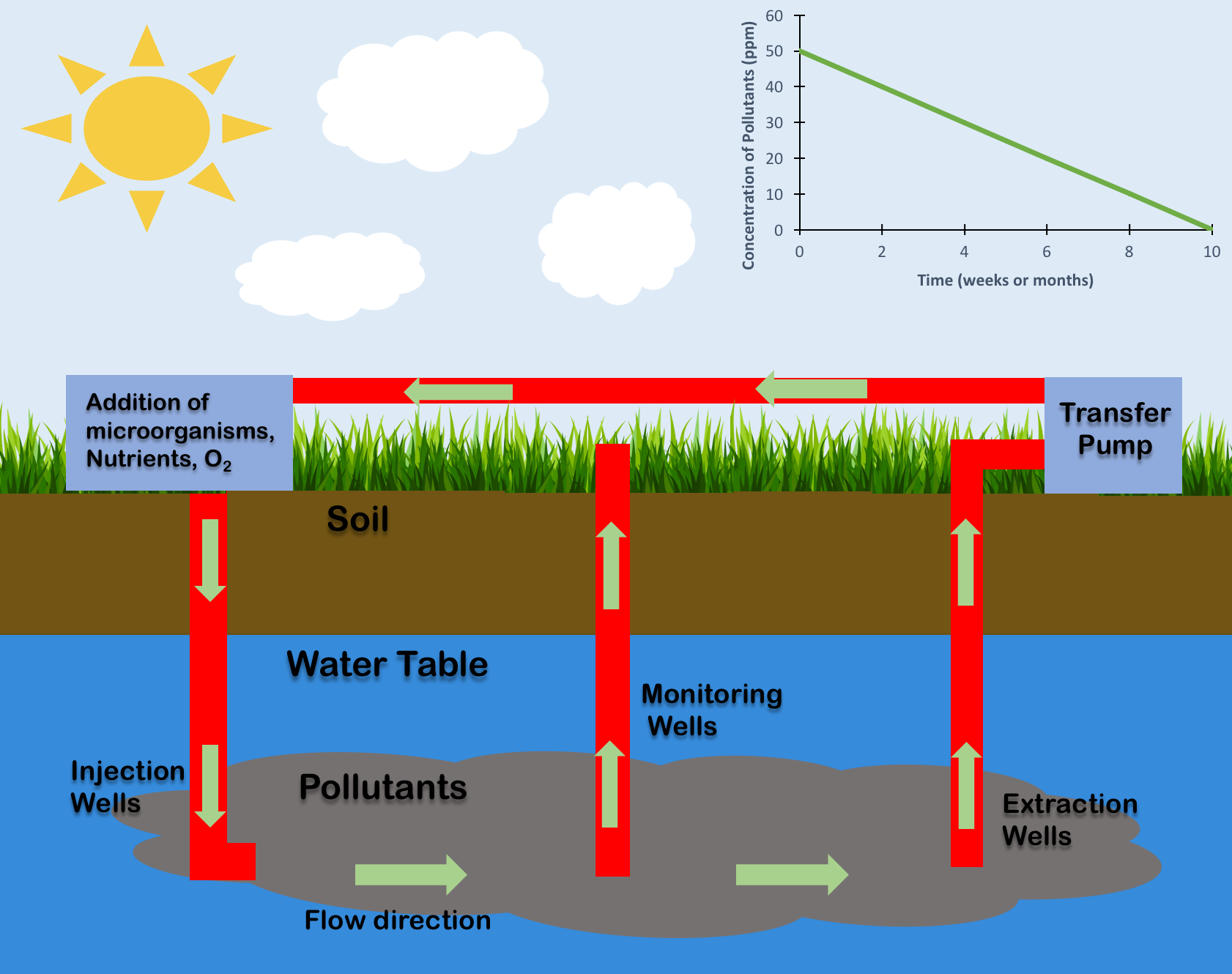|
Small Business Liability Relief And Brownfields Revitalization Act
The Small Business Liability Relief and Brownfields Revitalization Act (, 115 stat. 2356, "the Brownfields Law") was signed into law by President George W. Bush on January 11, 2002. Brownfields are defined as, "A former industrial or commercial site where future use is affected by real or perceived environmental contamination." The Brownfields Law amended the Comprehensive Environmental Response, Compensation, and Liability Act ( CERCLA or Superfund) by providing funds to assess and clean up brownfields, clarifying CERCLA liability protections, and providing funds to enhance state and tribal response programs. Other related laws and regulations impact brownfields cleanup and reuse through financial incentives and regulatory requirements. An Executive Take The Small Business Liability Relief and Brownfields Revitalization Act was a response to the 1980 act entitled The Superfund, which forced industries to pay for their own toxic spills and general pollution. President Bush cited in ... [...More Info...] [...Related Items...] OR: [Wikipedia] [Google] [Baidu] |
Brownfields
Brownfield is previously-developed land that has been abandoned or underused, and which may carry pollution, or a risk of pollution, from industrial use. The specific definition of brownfield land varies and is decided by policy makers and land developers within different countries. The main difference in definitions of whether a piece of land is considered a brownfield or not depends on the presence or absence of pollution. Overall, brownfield land is a site previously developed for industrial or commercial purposes and thus requires further development before reuse. Examples of post industrial brownfield sites include abandoned factories, dry cleaning establishments, and gas stations. Typical contaminants include hydrocarbon spillages, solvents and pesticides, asbestos, and heavy metals like lead. Many contaminated post-industrial brownfield sites sit unused because the cleaning costs may be more than the land is worth after redevelopment. Previously unknown underground w ... [...More Info...] [...Related Items...] OR: [Wikipedia] [Google] [Baidu] |
George W
George Walker Bush (born July 6, 1946) is an American politician and businessman who was the 43rd president of the United States from 2001 to 2009. A member of the Bush family and the Republican Party (United States), Republican Party, he is the eldest son of the 41st president, George H. W. Bush, and was the 46th governor of Texas from 1995 to 2000. Bush flew warplanes in the Texas Air National Guard in his twenties. After graduating from Harvard Business School in 1975, he worked in the oil industry. He later co-owned the Major League Baseball team Texas Rangers (baseball), Texas Rangers before being elected governor of Texas 1994 Texas gubernatorial election, in 1994. Governorship of George W. Bush, As governor, Bush successfully sponsored legislation for tort reform, increased education funding, set higher standards for schools, and reformed the criminal justice system. He also helped make Texas the Wind power in Texas, leading producer of wind-generated electricity in t ... [...More Info...] [...Related Items...] OR: [Wikipedia] [Google] [Baidu] |
Comprehensive Environmental Response, Compensation, And Liability Act
Superfund is a United States federal environmental remediation program established by the Comprehensive Environmental Response, Compensation, and Liability Act of 1980 (CERCLA). The program is administered by the Environmental Protection Agency (EPA) and is designed to pay for investigating and cleaning up sites contaminated with hazardous substances. Sites managed under this program are referred to as Superfund sites. Of the tens of thousands of sites selected for possible action under the Superfund program, 1178 (as of 2024) remain on the National Priorities List (NPL)The EPA and state agencies use the ''Hazard Ranking System (HRS)'' to calculate a site score (ranging from 0 to 100) based on the actual or potential release of hazardous substances from a site. A score of 28.5 places a site on the National Priorities List, eligible for cleanup under the Superfund program. that makes them eligible for cleanup under the Superfund program. *A ''section 104(e) letter'' is a request ... [...More Info...] [...Related Items...] OR: [Wikipedia] [Google] [Baidu] |
Public–private Partnership
A public–private partnership (PPP, 3P, or P3) is a long-term arrangement between a government and private sectors, private sector institutions.Hodge, G. A and Greve, C. (2007), Public–Private Partnerships: An International Performance Review, Public Administration Review, 2007, Vol. 67(3), pp. 545–558 Typically, it involves private capital financing government projects and services up-front, and then drawing revenues from taxpayers and/or users for profit over the course of the PPP contract. Public–private partnerships have been implemented in Public–private partnerships by country, multiple countries and are primarily used for infrastructure projects. Although they are not compulsory, PPPs have been employed for building, equipping, operating and maintaining schools, hospitals, transport systems, and water and sewerage systems. Cooperation between private actors, corporations and governments has existed since the inception of sovereign states, notably for the purpose ... [...More Info...] [...Related Items...] OR: [Wikipedia] [Google] [Baidu] |
Public–private Partnership
A public–private partnership (PPP, 3P, or P3) is a long-term arrangement between a government and private sectors, private sector institutions.Hodge, G. A and Greve, C. (2007), Public–Private Partnerships: An International Performance Review, Public Administration Review, 2007, Vol. 67(3), pp. 545–558 Typically, it involves private capital financing government projects and services up-front, and then drawing revenues from taxpayers and/or users for profit over the course of the PPP contract. Public–private partnerships have been implemented in Public–private partnerships by country, multiple countries and are primarily used for infrastructure projects. Although they are not compulsory, PPPs have been employed for building, equipping, operating and maintaining schools, hospitals, transport systems, and water and sewerage systems. Cooperation between private actors, corporations and governments has existed since the inception of sovereign states, notably for the purpose ... [...More Info...] [...Related Items...] OR: [Wikipedia] [Google] [Baidu] |
Total Petroleum Hydrocarbon
Total petroleum hydrocarbons (TPH) is a term used for any mixture of hydrocarbons that are found in crude oil. There are several hundred of these compounds, but not all occur in any one sample; because there are so many different chemicals in crude oil and in other petroleum products, it is not practical to measure each one separately when testing for contamination. However, it is useful to measure the total amount of TPH at a site. Chemicals that occur in TPH include hexane, benzene, toluene, xylenes, naphthalene Naphthalene is an organic compound with formula . It is the simplest polycyclic aromatic hydrocarbon, and is a white Crystal, crystalline solid with a characteristic odor that is detectable at concentrations as low as 0.08 Parts-per notation ..., fluorene, and constituents of commonly used fuels among others. Petroleum hydrocarbon ranges are monitored at various levels depending on the state and testing site. TPH is the sum of volatile petroleum hydrocarbons (VPH) ... [...More Info...] [...Related Items...] OR: [Wikipedia] [Google] [Baidu] |
Volatile Organic Compounds
Volatile organic compounds (VOCs) are organic compounds that have a high vapor pressure at room temperature. They are common and exist in a variety of settings and products, not limited to house mold, upholstered furniture, arts and crafts supplies, dry cleaned clothing, and cleaning supplies. VOCs are responsible for the odor of scents and perfumes as well as pollutants. They play an important role in communication between animals and plants, such as attractants for pollinators, protection from predation, and even inter-plant interactions. Some VOCs are dangerous to human health or cause harm to the environment, often despite the odor being perceived as pleasant, such as " new car smell". Anthropogenic VOCs are regulated by law, especially indoors, where concentrations are the highest. Most VOCs are not acutely toxic, but may have long-term chronic health effects. Some VOCs have been used in pharmaceutical settings, while others are the target of administrative controls ... [...More Info...] [...Related Items...] OR: [Wikipedia] [Google] [Baidu] |
Bioremediation
Bioremediation broadly refers to any process wherein a biological system (typically bacteria, microalgae, fungi in mycoremediation, and plants in phytoremediation), living or dead, is employed for removing environmental pollutants from air, water, soil, fuel gasses, industrial effluents etc., in natural or artificial settings. The natural ability of organisms to adsorb, accumulate, and degrade common and emerging pollutants has attracted the use of biological resources in treatment of contaminated environment. In comparison to conventional physicochemical treatment methods bioremediation may offer advantages as it aims to be sustainable, eco-friendly, cheap, and scalable. This technology is rarely implemented however because it is slow or inefficient. Most bioremediation is inadvertent, involving native organisms. Research on bioremediation is heavily focused on stimulating the process by inoculation of a polluted site with organisms or supplying nutrients to promote their growt ... [...More Info...] [...Related Items...] OR: [Wikipedia] [Google] [Baidu] |
2002 In The Environment
This is a list of notable events relating to the environment (biophysical), environment in 2002. They relate to environmental law, conservation (ethic), conservation, environmentalism and environmental issues. Events *The year 2002 was dedicated as the International Year of Ecotourism and Mountains. *The ASEAN Agreement on Transboundary Haze Pollution was signed between all ASEAN nations to reduce haze pollution in Southeast Asia. March *The Earth observation satellite Envisat is launched by the European Space Agency. *Deforestation in New Zealand, Native forest logging on public land ends in New Zealand. April *The Melbourne Principles, Melbourne Principles for Sustainable Cities were drawn up in the Australian city of Melbourne. July *The Game and Feral Animal Control Act 2002 passes into law. It aims to manage and regulate the hunting of game in New South Wales in Australia. August *The World Summit on Sustainable Development, WSSD or Earth Summit 2002 took place in Johan ... [...More Info...] [...Related Items...] OR: [Wikipedia] [Google] [Baidu] |





